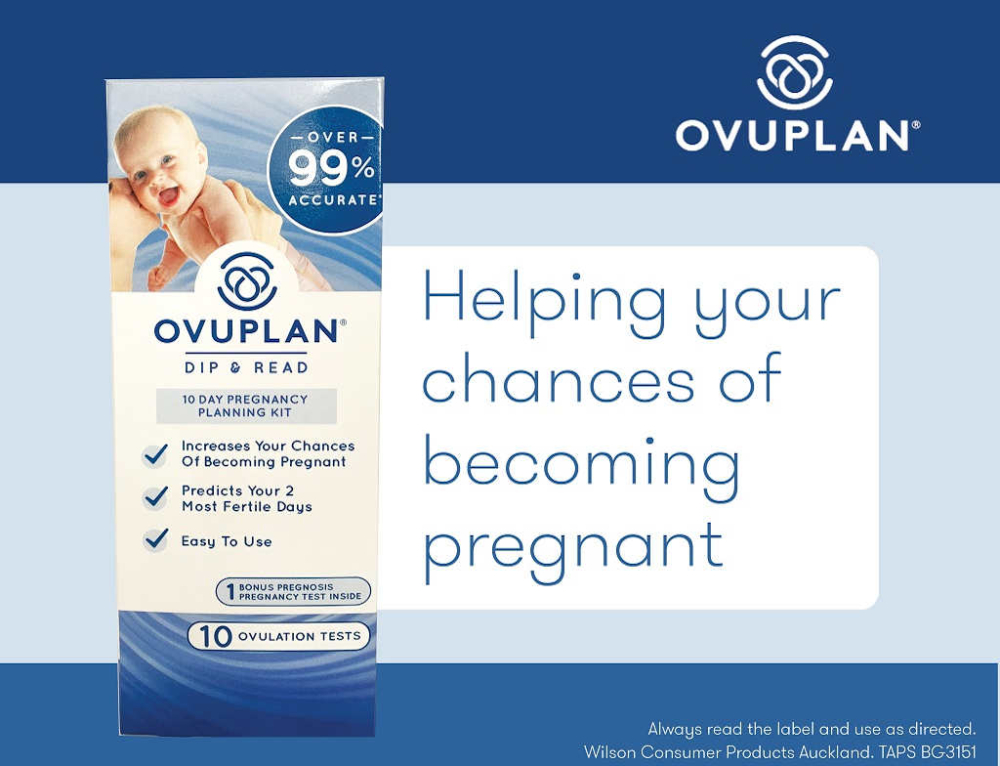Now that your body is home to your baby for the next 40 weeks or so, there are many aspects to consider, to ensure you have a healthy, well-balanced diet. Most essential vitamins and minerals can be obtained through eating a variety of nutritious foods. However, to plan your diet properly, you need to understand the 5 main food groups and how much of each type of food you should aim to eat on a daily basis.
If you have a special diet for a medical condition (such as diabetes) you may want to consult with a qualified dietician at your maternity hospital when you have your first pregnancy health check. Dieticians are trained to help you plan your food choices to support your specific health condition, as well as make sure you are getting all the nutrients you and your baby need. Some women will choose to see a private dietician. However, it is important to make sure they have experience in advising women who are pregnant.
If you have a vegetarian or vegan diet, you need to be conscious of including foods rich in protein, iron, calcium, vitamin B12 and zinc. Many vegetarian women have normal, healthy pregnancies and give birth to healthy babies, as well as breastfeed successfully on diets without meat (and in many cases without supplements). The key to supporting this is to plan your diet carefully, to ensure you have a wide variety of foods to obtain all the nutrients you and your baby require, as well as providing sufficient energy to maintain your weight and help your baby to grow.
Listeriosis
During the last 10 to 15 years, we have become more aware of the possibility of a woman experiencing a listeriosis infection during her pregnancy from the foods she eats. Listeriosis is relatively uncommon, but may be due to eating foods contaminated by a bacterium called listeria monocytogenes. Pregnant women and their unborn babies (along with newborn babies, the elderly and people with suppressed immune systems) are particularly at risk of developing listeriosis (compared to the general healthy community who may not be affected by eating the bacteria).
The NZ about 25 cases occur annually. However, the difficulty in recognising the listeriosis illness may mean that some cases are not detected.
The listeriosis microorganism is naturally widespread in nature and can be readily found in soil and vegetation. It is usually transmitted to humans through contaminated food, with recorded outbreaks being linked to dairy products (such as soft cheeses) or pre-cooked meat products (such as pate and sliced deli meat). Listeria may also be found in raw meat, raw vegetables, non-pasteurised milk and ‘ready-to-eat’ foods, such as diced chicken (as used in sandwich shops), oysters, smoked fish and smoked mussels. Because listeriosis can grow and multiply at temperatures as low as 0.5oCelsius (or 32.9oFahrenheit), refrigerating these foods does not always help. However, cooking contaminated foods at high temperatures will kill the bacteria.
Another way to contract listeriosis is through the handling of miscarried products of animals, due to the listeria infection. Therefore, it is important for pregnant women working with animals not to touch these if possible (or to wear gloves if this cannot be avoided).
Fish and mercury
Fish is a highly nutritious and an excellent source of nutrients such as Omega 3, protein, minerals, vitamin B12 and iodine, which provide important health benefits for you and your baby. Fish low in mercury that can be eaten 2 to 3 times per week include mackerel, silver warehou, Atlantic salmon, canned salmon and canned tuna, herring, sardines, snapper, trout, trevally, whiting, anchovies, bream, mullet and garfish. Other seafoods that can also be eaten regularly are prawns, lobsters, bugs, squid and octopus.
A few types of fish have high levels of mercury and should be limited, or avoided. These include:
- Orange roughy (sea perch) and catfish – limited to only one serve per week with no other fish eaten that week.
- Shark (flake), billfish, marlin, swordfish (broadbill), ray, barramundi, gemfish, ling, southern bluefin tuna, king mackeral and tilefish should be limited to one serve per fortnight, with no other fish eaten that fortnight.
By knowing the kinds of fish to limit you can avoid any potential harm from mercury while enjoying the many health benefits of fish.
Folic acid
Folic acid (or ‘folate’) is a B group vitamin essential for the growth of healthy, new body cells. Extensive research has now proven beyond a doubt that women who have adequate intakes of the folate during the first 6 to 12 weeks of their pregnancy (and ideally 1 to 2 months before conception) can greatly reduce their chances of having a baby with specific abnormalities, known as ‘neural tube defects’ (or NTD’s).
It is during the early weeks of pregnancy that your growing baby develops the beginnings of their spinal cord and brain. For some reason, an adequate intake of folic acid by the mother supports this stage of the baby’s development.
The minimum, routine, recommended daily intake of folic acid is 400 micrograms (written as 400 ug, or 0.4mg). However recommended doses can vary slightly from country to country, generally from 360ug (or 0.36 mg) to 800ug (or 0.8 mg). Check the dosage with your caregiver. While it is possible to obtain folic acid through eating foods rich in this vitamin, it is more likely to be consistently achieved if you take a daily folic acid supplement.
A few women may be advised to take a higher dose of folic acid, about 5,000 ug (or 5mg). This is generally the case for women who have had a previous child with a neural tube defect, or who have a close relative that has had a baby with a neural tube defect. Doses of folic acid this high should only be taken under medical supervision. If you think you may need more folic acid than the minimum dose, seek the advice of your caregiver or genetic counsellor.
Note: Folic acid has the potential to reduce the effectiveness of medications used to control seizures in people with epilepsy, possibly causing uncontrolled seizures. If you take anti-epileptic medications you should only supplement with folic acid under medical supervision. Consult with your doctor, neurologist or a genetic counsellor.
Iron
Iron is an essential mineral that helps our bodies to transport and release oxygen to all our cells. Iron works in partnership with folic acid and vitamin B12 to produce haemoglobin, or the red blood cells that carry the oxygen. Red blood cells live in the body for about 4 months before regenerating. A person’s red cell blood count can deplete if they become iron deficient, possibly leading to a condition called ‘anaemia’. You can read more about iron deficiency in vitamins and minerals – iron.
When a woman becomes pregnant her iron needs increase to support her pregnancy and the growth of her baby(s).
This is particularly so during the last 3 months of the pregnancy when your baby stores iron in their liver. Your baby’s ‘iron storage’ is nature’s way of providing them with adequate iron for the first 6 months of their life after birth, before they need to start eating solid foods.
Adequate iron can usually be obtained through a well-balanced diet and interestingly, we now know that a pregnant woman’s intestines adapt by being able to absorb more iron from the foods she eats, as a natural response to her increased physical needs. It is this amazing natural adjustment that is probably the reason why many pregnant women do not end up needing iron supplements.
Blood tests for iron (and others) are usually done as part of your first pregnancy check-up visit at around 12 weeks of the pregnancy. Having a good diet is usually the only thing needed to prevent anaemia and iron deficiency during pregnancy. It is widely accepted that there is no need to routinely take iron supplements while pregnant, unless these tests are abnormally low and you have some risk factors associated with needing them. You can read all about iron rich foods, routine iron blood tests and iron supplements in High Iron diets.
Calcium
During pregnancy your developing baby will need plenty of calcium to grow their own bones. If you do not have enough calcium in your diet, your baby will still obtain the calcium they need, but they will do this by taking the calcium stored in your bones. This may lead to you not being able to maintain adequate levels of calcium for your own health. There is also some research that adequate calcium intakes during pregnancy may prevent high blood pressure developing and possibly prevent premature birth of the baby.
Pregnant and breastfeeding women should aim and have at least 900 to 1200 milligrams of calcium each day (or 3 to 4 servings of calcium rich foods).
However, if you are vegan, dislike, or are allergic to dairy foods (or if your nausea makes them unpalatable for a while), you will need to look at eating alternative foods that contain calcium. Occasionally, your caregiver will recommend you take calcium supplements to meet your needs, especially if you are having twins, triplets or more.
Cravings
Many women will talk about having weird and wonderful food cravings during their pregnancy. These are very normal and may come and go, lasting for a few days to a few weeks, or even months. In the same sense, pregnant women will also talk about suddenly experiencing aversions to certain foods they previously enjoyed. Perhaps not even being able to tolerate the smell of them, let alone eating them.
Changes in your food tastes (and smell) are thought to be due the hormonal changes of pregnancy. They are not generally due to your body ‘needing’ certain foods. For example, cravings for ice cream, chocolate and milk do not mean a woman lacks calcium and a craving for pickles does not mean she needs salt.
Take care that your cravings do not impinge on your ability to plan a nutritious diet. Sugary, fatty and salty foods can be acceptable as occasional treats, but they tend to provide ’empty calories’. That is, they supply calories for body energy, without contributing many vitamins, minerals and nutrients. If you eat too many of these they can start to replace other foods that would be more capable of providing the nutrients your body needs. Eating too many sugars and fats can also lead to unnecessary weight gain during pregnancy.
A craving for non-foods is known as pica. This can include a desire or ‘craving’ to eat dirt, clay, ice or toothpaste. Pica is often associated with cultural folklore in some African societies, however, it is also associated with the woman possibly having an iron deficiency. These foods do not contain iron, and in the case of clay or dirt, they can actually inhibit the absorption of iron from normal foods.







Leave A Comment
You must be logged in to post a comment.